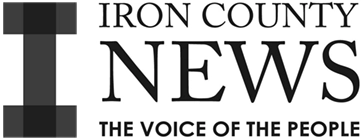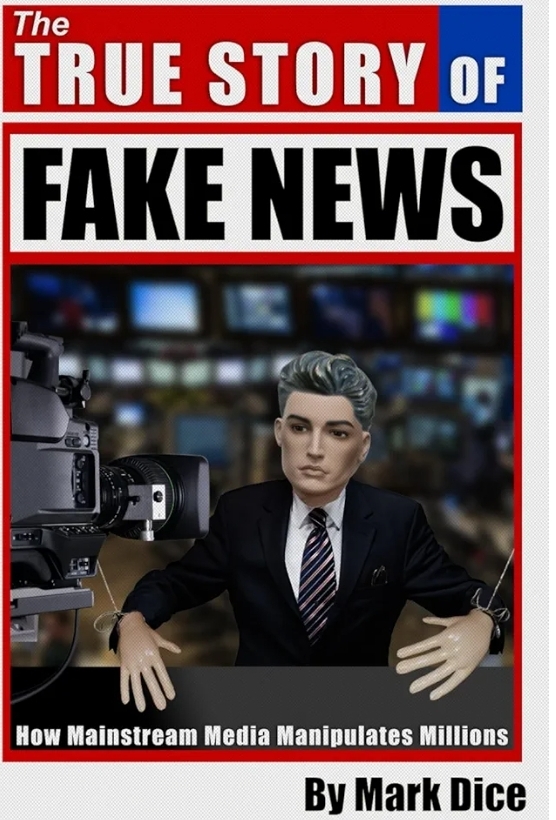Mark Dice’s The True Story of Fake News: How Mainstream Media Manipulates Millions explores the concept of “fake news” and argues that mainstream media outlets deliberately manipulate public opinion through misinformation, bias, and selective reporting. Dice claims that these outlets serve the interests of powerful political and corporate elites rather than presenting objective, balanced journalism.
Key Themes and Ideas:
Definition of Fake News:
- Dice defines fake news as deliberate misinformation or distortion of facts by mainstream media to shape public perception. He argues that media outlets often use biased reporting, misleading headlines, and selective omission of facts to push certain narratives that align with the agendas of political parties, corporate sponsors, or elite figures.
- According to Dice, fake news is not just false information, but also includes half-truths, exaggerations, and manipulations designed to sway public opinion.
Media Manipulation Tactics:
- Dice outlines several methods through which he believes the media manipulates its audience:
- Selective Reporting: Choosing only certain aspects of a story or event to report, while ignoring or downplaying other relevant facts. This skews the audience’s understanding of the event.
- Sensationalism: Exaggerating stories or focusing on extreme or emotional elements to attract attention and influence emotions, which, according to Dice, undermines rational analysis.
- Omission of Context: Reporting facts out of context to create a misleading narrative. Dice claims that context is often intentionally omitted to distort the true meaning or implications of a story.
- Bias in Story Selection: Prioritizing stories that fit a certain ideological or political agenda while ignoring those that do not. Dice argues that this is often done to serve the interests of the media’s corporate sponsors or political allies.
Historical Precedent of Media Manipulation:
- Dice traces the history of media manipulation, arguing that propaganda and misinformation are not new phenomena. He cites historical examples, such as the yellow journalism of the late 19th century, when sensationalized stories were used to sell newspapers and influence public opinion, particularly in matters of war and politics.
- He also discusses government involvement in media manipulation, such as the use of Operation Mockingbird, a CIA initiative during the Cold War to influence domestic and foreign news outlets.
Bias in Mainstream News Outlets:
- One of Dice’s main arguments is that most mainstream media outlets, especially in the United States, are biased toward liberal or progressive ideologies. He claims that outlets like CNN, The New York Times, and MSNBC present information in a way that favors left-leaning political agendas and disparages conservative viewpoints.
- According to Dice, this bias leads to unbalanced reporting on major issues such as immigration, gun control, healthcare, and U.S. foreign policy. He argues that conservative viewpoints are often misrepresented or demonized, while liberal perspectives are framed as rational or morally superior.
Corporate Influence on News:
- Dice highlights the role of corporate ownership and advertising in shaping news content. He argues that large corporations that own media outlets or fund them through advertising have a vested interest in controlling what gets reported. Stories that could harm corporate profits or challenge the status quo are either downplayed or not reported at all.
- Conflicts of interest arise when news outlets are owned by conglomerates with diverse business interests, leading to selective reporting that protects corporate and political alliances.
Social Media and Censorship:
- In addition to mainstream media, Dice discusses the role of social media platforms like Facebook, Twitter, and YouTube in controlling information. He argues that these platforms often censor conservative voices or alternative viewpoints, labeling them as fake news or misinformation.
- Algorithm manipulation, shadow banning, and content removal are tactics that, according to Dice, are used to ensure that only certain perspectives are visible to the public. This, he claims, creates an echo chamber where only the views endorsed by the platform’s leadership or its political allies are amplified.
Media as a Tool for Political Propaganda:
- Dice argues that mainstream media has become a tool for political propaganda, particularly in the hands of the Democratic Party in the U.S. He claims that the media consistently pushes narratives that support progressive political agendas while framing conservative policies and politicians as regressive or dangerous.
- Examples given include media coverage of Donald Trump, whom Dice claims was consistently vilified by major outlets, and Hillary Clinton, who, he argues, received favorable coverage despite controversies.
Weaponization of Fake News:
- According to Dice, the term “fake news” itself has been weaponized by media and political elites to discredit dissenting opinions or alternative media outlets. He suggests that when mainstream media brands certain outlets or stories as “fake news,” it is often done to protect their own narratives or suppress information that challenges the status quo.
- Dice argues that the labeling of alternative news sources as fake news is an attempt to control the flow of information and limit the public’s access to diverse perspectives.
Consequences of Media Manipulation:
- Dice believes that media manipulation has serious consequences for society. It leads to a misinformed public that is unable to make informed decisions on critical issues, ranging from politics to healthcare to foreign policy.
- He also warns of the polarization that results from biased reporting. As people consume media that reinforces their existing beliefs and demonizes opposing views, society becomes increasingly divided and less capable of engaging in productive dialogue.
The Role of Independent Media:
- Dice advocates for the importance of independent media outlets that challenge the narratives presented by mainstream sources. He praises the rise of alternative news sources on platforms like YouTube, podcasts, and independent websites, which offer a counter-narrative to the mainstream.
- However, Dice warns that these alternative voices are often marginalized or censored by both mainstream media and tech platforms, making it harder for the public to access unbiased or differing perspectives.
Call for Media Literacy:
- To combat the influence of fake news, Dice calls for increased media literacy among the public. He encourages readers to critically evaluate the news they consume, check multiple sources, and recognize the techniques used to manipulate information.
- Dice stresses the importance of understanding the motives behind the news, urging people to look beyond headlines and flashy stories to uncover the biases and interests at play.
Mark Dice’s The True Story of Fake News presents a comprehensive critique of the mainstream media, arguing that it has become a tool for manipulation, bias, and political propaganda. Through selective reporting, sensationalism, and corporate influence, the media, according to Dice, distorts reality to serve the interests of the powerful. He warns that without greater media literacy and access to alternative perspectives, society risks becoming increasingly polarized and misinformed.
For readers who are skeptical of mainstream narratives and seek to understand how news is shaped to influence public opinion, Dice’s book offers a detailed look at the mechanisms behind media manipulation and the importance of independent media in a world dominated by corporate and political elites.






